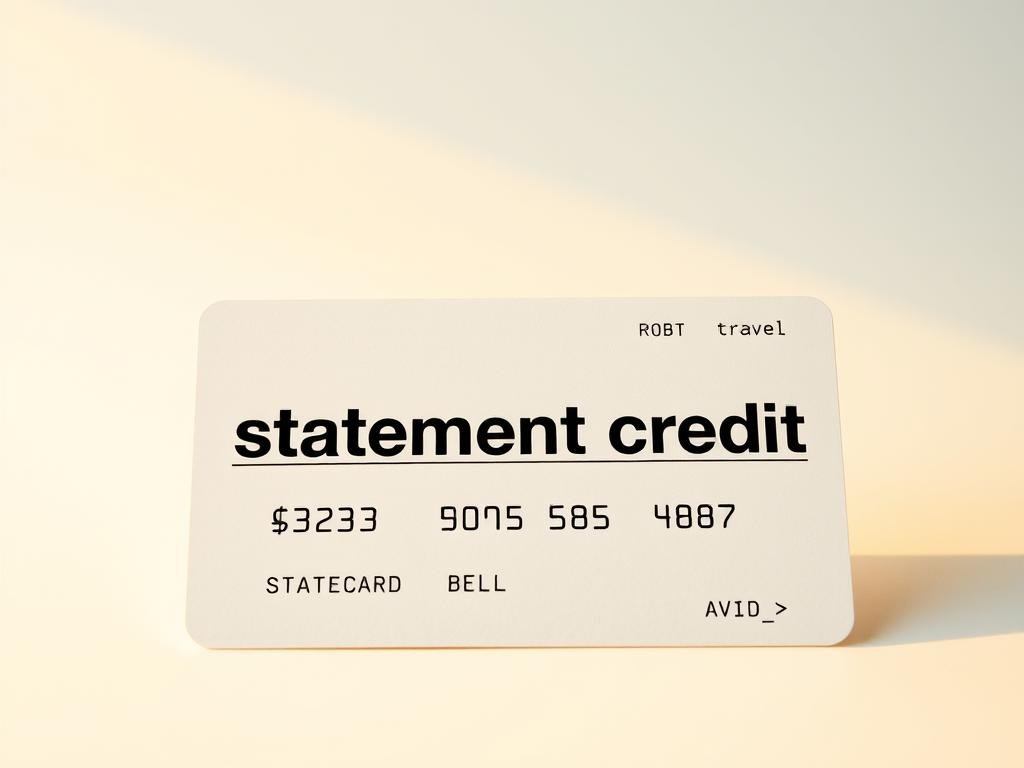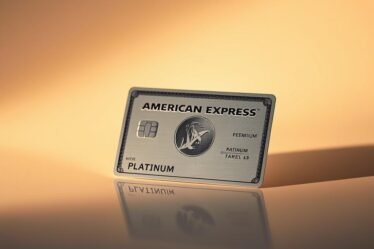Quick take: You can turn the Business Platinum into a powerful tool for company travel when you know what to use and when.
Start with the cost: the card carries an $895 annual fee that many cardholders offset with credits and lounge access. The key is timing your spend and enrollments so credits post across the calendar year.
Earn rates are central. You get 5X points on flights and prepaid hotels booked via American Express Travel, 2X in select U.S. categories and on large purchases, and 1X elsewhere. A 35% points rebate applies when you Pay with Points on your chosen airline, capped per calendar year.
We’ll map lounges, hotel programs, airline fee credit, statement credits, and enrollment rules so you can see real value quickly. By the end, you’ll know whether this platinum card matches your business travel goals and how to act on the offer now.
Key Takeaways
- Understand the $895 fee and which credits offset it each year.
- Use 5X and 2X earning paths to maximize points on travel and big buys.
- Leverage the 35% points rebate for high-value flight redemptions.
- Know lounge access rules and how spending can change access limits.
- Enroll in required programs early so statement credits post reliably.
- Match your rewards strategy to your travel calendar for predictable value.
Why this Ultimate Guide matters to your business travel today
With fares and hotel rules in flux, the right card can turn overhead into recoverable value. This guide shows how the business platinum card folds newer perks, credits and lounge access into a practical travel plan.
Start with timing: many statement credits reset on a calendar year or semiannual schedule. You must enroll and book at the right time to capture credits that offset the $895 annual fee.
We separate what delivers immediate value from what takes planning. You’ll learn how to use elevated earn rates, the 35% Pay with Points rebate and expanded lounge access to save time and money.
- Which credits post quickly versus those that need enrollment.
- How to align travel and business purchases to push more value per dollar.
- Actionable steps you can take now to lock in credits this time of year.
By the end you’ll understand the real-world value of the card, when the platinum card justifies its cost, and which terms apply so you avoid surprises.
Who should consider the Business Platinum for travel
The best fit depends on how often you travel and how your team spends. If trips are frequent and you value faster airport flow, upgraded hotel stays, and lounge time, the card can deliver outsized returns.
- You fly often and use Centurion and Global Lounge Collection access enough to save time and stress.
- Your travel purchases align with elevated earn rates — 5X via the travel portal or 2X in select categories — so points accumulate quickly.
- You make regular premium hotel stays and take advantage of Fine Hotels + Resorts or The Hotel Collection perks and credits.
When to choose a lower-fee card:
- If you rarely travel, skip lounges, or most purchases earn only 1X, a simpler card may give better net value given the $895 fee.
- If tracking enrollments and routing bookings through american express travel conflicts with your company policy, a lower-touch option might be smarter.
amex-business-platinum-travel-benefits at a glance
A clear snapshot helps you judge whether the card’s travel perks justify the yearly cost. This quick view highlights the features that most affect return on the $895 annual fee and how timing changes the math.
Key perks that drive real travel value
Earn rates matter: you get 5X on flights and prepaid hotels booked through american express travel, 2X on select U.S. categories and on purchases of $5,000+ per calendar year, then 1X elsewhere.
Lounge and elite access: Centurion and Global Lounge Collection membership speeds airport flow. Delta Sky Club visits are limited unless you hit $75,000 in spend in a calendar year.
Costs, credits and how the math can work
You can offset the fee with layered statement credits — up to $600 on Fine Hotels + Resorts or The Hotel Collection stays split semiannually, up to $200 in airline fee credit, plus other business credits.
- 35% rebate: Pay with Points rebate on eligible flights, capped per calendar year at 1 million points back.
- Track timing: enroll where required and plan stays and purchases across semiannual and annual windows to capture full value.
- Run the numbers: compare your typical stay patterns, ticket prices and purchases to see if credits and higher earn rates cover the fee.
Earning points on travel and business purchases
Small changes in where you book and how you batch purchases can multiply your points per dollar. Route airfare and prepaid hotel bookings through American Express Travel to earn 5 points per dollar on eligible fares and prepaid stays.
5X on flights and prepaid hotels via American Express Travel
Book flights and prepaid hotels in the portal for the full 5X rate. That often beats native rates on other cards when you factor the 35% rebate on Pay with Points for your selected airline.
2X on select U.S. categories and $5,000+ purchases per calendar year
You earn 2 points per dollar on eligible U.S. purchases — including cloud providers, software, electronics retailers, shipping and construction materials — for up to $2 million per calendar year. Large transactions of $5,000+ also qualify under those rules.
What earns just 1X and how to adapt your spend
Most everyday purchases earn 1 point per dollar. To avoid low returns, consider reallocating routine nontravel spend to a card with higher base rates.
- Audit bookings so team flights and stays that can be prepaid go through the travel portal.
- Group purchases into $5,000+ orders when operationally sensible to lock 2X on qualifying categories.
- Have finance confirm merchant coding so eligible suppliers register correctly on your account.
- Track your progress toward the $2 million per calendar year cap and adjust timing if you near it.
Redeeming Membership Rewards for maximum travel value
Small timing choices can multiply the real value of your Membership Rewards. Use the 35% Pay with Points rebate on your designated airline to boost airfare redemptions. The rebate applies to flights booked through american express travel and can make otherwise costly award routes far more attractive.
Know the limits: the Pay with Points rebate is capped at 1 million points back per calendar year. You must have enough points to cover the booking up front, and rebated points typically post within two billing cycles.
Transferring points to airline and hotel partners often yields the highest value. Many partners transfer 1:1 and execute instantly. Watch for occasional transfer bonuses to stretch your rewards further.
Redemptions and rules to follow
- Use Pay with Points on your selected airline when award space is scarce — the 35% rebate can outperform partner charts on many routes.
- Compare partner award pricing vs. Pay with Points; on sale fares the rebate may win. Track transfer bonuses to programs like Aeroplan or Flying Blue.
- Avoid low-value redemptions such as many gift cards or small statement credits that dilute points to ~1 cent or less.
- Keep records of redemption timing, calendar limits and any applicable terms so you don’t exceed per calendar caps.
Hotel value unlocked: Fine Hotels + Resorts and The Hotel Collection
Timing your hotel bookings around semiannual credits can turn routine nights into premium experiences. The business platinum card gives up to $600 per calendar year as two $300 semiannual hotel statement credits for prepaid Fine Hotels + Resorts or The Hotel Collection bookings via american express travel.
- FHR often includes daily breakfast for two, on-property credits, room upgrades when available, and late checkout.
- Book prepaid FHR rates through the travel portal to unlock those premium on-property perks and confirm eligibility for the credit.
When The Hotel Collection makes sense:
- The Hotel Collection requires a two-night minimum and pairs well with client visits or conferences.
- Choose THC if the bundled perks plus the semiannual credit outweigh a standard rate.
How to capture the full statement credit value:
- Time stays to use the January–June and July–December $300 windows so you don’t leave credits unused.
- Compare portal pricing vs. direct booking to ensure net value, and keep receipts to confirm credits post.
- Incorporate these booking rules into your travel policy so your team consistently earns hotel rewards and on-property perks without extra friction.
Airport lounge access that elevates every trip
Access to premium airport spaces reduces travel friction and keeps your team on schedule. Your business platinum card opens doors that convert wait time into productive minutes and cleaner connections.
Centurion Lounges and the American Express Global Lounge Collection
Use your card to enter Centurion Lounges for upgraded dining and reliable work zones. The Global Lounge Collection through american express expands options across networks and hubs.
Delta Sky Club visit limits and how to unlock more access
Delta Sky Club access requires an eligible same-day flight. You get 10 visits per calendar year unless you hit $75,000 in spend for unlimited entry—track this if you travel heavily.
Priority Pass, Escape and Lufthansa lounge nuances
Priority Pass requires enrollment and excludes restaurant locations. Escape Lounges are included where available, and Lufthansa Lounges allow entry with a same-day Lufthansa flight.
- Confirm rules: check guest policies and hours before you go to avoid surprises.
- Factor lounge location near your gate to cut transit time and keep boarding punctual.
- Use lounges to work, refresh, and reduce out-of-pocket food costs during a stay.
- Keep enrollments current and monitor any program or statement credit updates tied to access terms.
Elite status perks at hotels and car rental programs
Registering for elite status is one of the simplest ways to add value to your business travel. When you enroll, you start getting upgrades, faster service, and higher earning rates on qualifying nights and rentals.
Hilton Honors Gold and Marriott Bonvoy Gold: Enroll to earn enhanced points per stay, priority late checkout, and potential room upgrades. These hotel perks often improve comfort for clients and teams on multi-night trips.
Leaders Club Sterling from The Leading Hotels of the World
Choose Leaders Club Sterling if you book independent luxury hotels. You can get confirmed upgrades, welcome amenities, and extra points per stay—useful when you prefer boutique hotels that aren’t part of big chains.
Avis, Hertz and National for smoother rentals
Claim elite rental status with Avis Preferred, Hertz Gold Plus Rewards, and National Emerald Club. These memberships speed your counter time, provide dedicated lanes, and often improve vehicle selection during peak days.
- Match your frequent hotel patterns to the status you’ll use most and keep membership profiles current.
- Combine status with Fine Hotels + Resorts or The Hotel Collection bookings to layer upgrades and perks.
- For car rental, set profile preferences (insurance, fuel, vehicle class) to avoid counter delays.
Maintain active membership and sync details to your corporate travel tools so status recognition happens automatically and your teams get consistent value from the card.
Statement credits that reduce your trip costs
Statement credits built into your corporate card can turn routine fees into near-immediate savings. Use them to cut out-of-pocket charges and speed travel for you and key employees.
- Airline fee credit: designate an airline and apply up to $200 per calendar year toward checked bags, seat fees, or onboard purchases where eligible.
- Clear Plus credit: get up to $209 a year to shorten identity-verification lines and pair it with TSA PreCheck or Global Entry.
- Global Entry / TSA PreCheck: the card covers Global Entry ($120 every four years) or TSA PreCheck (up to $85 every 4½ years) so you move faster through security and immigration.
Track which credits reset by calendar year versus multi-year cycles. Confirm enrollment steps and the exact terms for each credit so charges post as a statement credit.
“Prioritize credits for your most frequent travelers and combine expedited security with lounge access to compress airport dwell time without losing comfort.”
With the business platinum card, plan renewals, keep receipts, and review fee categories each year to align credits with your common incidental charges. This simple calendar planning can lower travel cost and improve time savings.
Business-centric credits that can offset the annual fee
A set of targeted vendor credits can quickly dilute the net annual fee for your company. Focus on predictable, repeatable credits and map them to procurement cycles so value posts without last-minute scrambling.
Dell credit opportunities
You can get up to $150 back on U.S. purchases directly at Dell. Plan larger buys: after $5,000 in spend in a calendar year, an extra $1,000 statement credit may post.
Tip: batch planned hardware purchases to clear the $5,000 threshold and capture both credits.
Indeed, Adobe, wireless and Hilton offsets
Quarterly and monthly credits add up. Indeed offers up to $360 per calendar year ($90 per quarter). Wireless refunds run up to $120 annually ($10/month).
Adobe returns $250 per year after $600 in U.S. purchases. Hilton for Business gives up to $200 per year ($50 per quarter) for hotels. Enrollment is often required.
High-spend flight and Amex One AP credits
If your account reaches $250,000 in eligible annual spend, you can unlock large travel credits — up to $1,200 in flight credits and up to $2,400 in One AP credits for big programs.
- Map quarterly and monthly credits so they post predictably.
- Centralize eligible purchases on this card and verify vendor billing rules.
- Keep a credit calendar and an owner to avoid missed refunds.
“Prioritize credits that match recurring company costs and coordinate renewals so value posts within the right calendar windows.”
Built-in protections and premium travel programs
Your card includes several built-in protections that cut replacement costs and give peace of mind when you travel or buy equipment for the business.
Cellphone protection and shopping safeguards
Purchase protection covers eligible items against accidental damage or theft for 90 days, up to $10,000 per covered purchase and $50,000 per account per calendar year.
Extended warranty adds one extra year to eligible U.S. manufacturer warranties of five years or less. This is useful for electronics and business equipment you rely on daily.
Cellphone protection: register your phone bills on the card to qualify. Coverage is up to $800 per claim with two claims allowed per 12 months; terms apply. Keep receipts and serial numbers to speed claims.
International Airline Program and Cruise Privileges Program
The card gives access to premium travel programs for higher-end bookings. Use the International Airline Program to shop preferential premium-cabin fares when they match your route and schedule.
The Cruise Privileges Program can add onboard value like credits or upgrades where available. Enrollment and specific terms apply for both programs.
- Use purchase protection for accidental damage or theft within 90 days.
- Extend warranties by one year for eligible purchases.
- Register phone billing to leverage cellphone protection and follow documentation rules.
- Access the International Airline Program for premium-cabin opportunities and the Cruise Privileges Program for onboard perks.
- Keep receipts, serial numbers, and claim forms to simplify requests.
- For rentals, align the card’s coverage with your company car rental insurance.
- Train staff on these protections to reduce downtime and replacement spend.
“Review the fine print and enroll where required so these protections and programs work when you need them.”
Calendar strategy: How to plan your year for maximum value
Plan your spending calendar early so credits and caps work in your favor all year. Treat the calendar as a tool: schedule stays, enrollments, and large purchases so statement credits post predictably and you avoid wasted time chasing refunds.
Semiannual and quarterly credit timing
Lock in the two $300 hotel windows by booking one prepaid stay in January–June and another in July–December to claim the full $600.
Set quarterly reminders for Indeed and Hilton credits and automate monthly wireless refunds so small credits don’t get missed.
Aligning business purchases with per calendar year benefits
Group major purchases to hit the per calendar year thresholds for higher earn rates and the 35% Pay with Points rebate. Front-load or back-load spend depending on supplier cycles.
- Set enrollment reminders so benefits that require activation post to your account.
- Coordinate with finance and travel managers to bake these dates into procurement and booking workflows.
- Run quarter-end reviews to find missed statement credits and plan make-goods before the calendar year closes.
“Document your playbook so any team member can execute the timing and protect full-year value.”
Comparing Business Platinum to alternative premium cards
When you compare premium cards, focus on how each one actually fits your operations, not just its headline perks.
Business Gold for lower fee and adaptive earn rates. The Business Gold carries a lower $375 annual fee and adapts to your top two spend categories each month. If your purchases shift, its monthly rates can outperform a high-fee card that relies on portal bookings.
Chase Sapphire Reserve for flexible travel credits
The Sapphire Reserve gives a $300 annual travel credit that applies broadly and simplifies accounting. It also offers primary rental car protection, which can matter if your team rents often or drives internationally.
When a no-annual-fee pairing can outperform
Pairing a business premium card with a no-fee rewards card can beat a single high-fee offer. Use the premium card for lounges, elite status access, and portal 5X-style boosts, and the no-fee card for everyday purchases that earn solid points per dollar.
- Compare points per direct bookings vs. portal bookings to match workflow.
- Weigh lounge ecosystems and guest rules when travel involves many staff.
- Project total value: add credits, fees, and realistic redemption rates before deciding.
Common pitfalls to avoid with premium travel benefits
Small missteps with enrollments and coding can turn a valuable perk into a missed refund. You need a simple checklist so statement credit windows and partner rules don’t cost you time or money.

Enroll before you spend. Many credits require activation; failing to enroll is the top reason a statement doesn’t show the expected credit.
Enrollment requirements and exclusions that surprise you
Priority Pass often excludes restaurant locations, and many credits only cover specific merchant codes. Review the exact terms so excluded purchases don’t derail your plan.
Validate how merchants code purchases. Misclassified transactions may not earn bonus points or trigger a statement credit.
Prepaid rates, minimum stay rules and partner limitations
Confirm The Hotel Collection’s two-night minimum and prepaid requirement before you book. If you cancel a prepaid stay, refunds can be limited and credits may be voided.
Remember Delta Sky Club access: you get 10 visits per calendar year unless $75,000 in annual spend unlocks unlimited entry. Lounge rules vary by partner—check them before you plan to use lounges.
- Watch per calendar timing: charges near year-end can settle in the next calendar year and miss intended windows.
- Document purchases and keep confirmations to resolve missing statement credits quickly.
- Review where terms apply so you don’t assume coverage for all purchases.
“Treat enrollments, coding and timing as part of your travel workflow; they decide whether the card delivers net value.”
Conclusion
strong, Your playbook matters. A small operations checklist turns the business platinum into a predictable tool rather than an occasional perk.
Use timing, enrollments, and the 35% Pay with Points rebate to stack hotel and airline credits. Track credits by calendar year so you capture each credit and avoid lapses in value.
When you pair the platinum card with a low-fee everyday card, you protect non-bonus spend while using this card where it earns most: premium travel, large business buys, and partner programs.
Reassess annually: review account activity, tally points and credits, and decide whether the platinum offer still outweighs the $895 annual fees.


